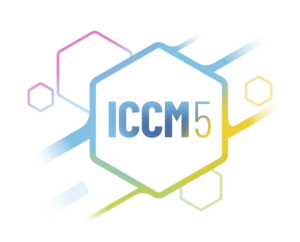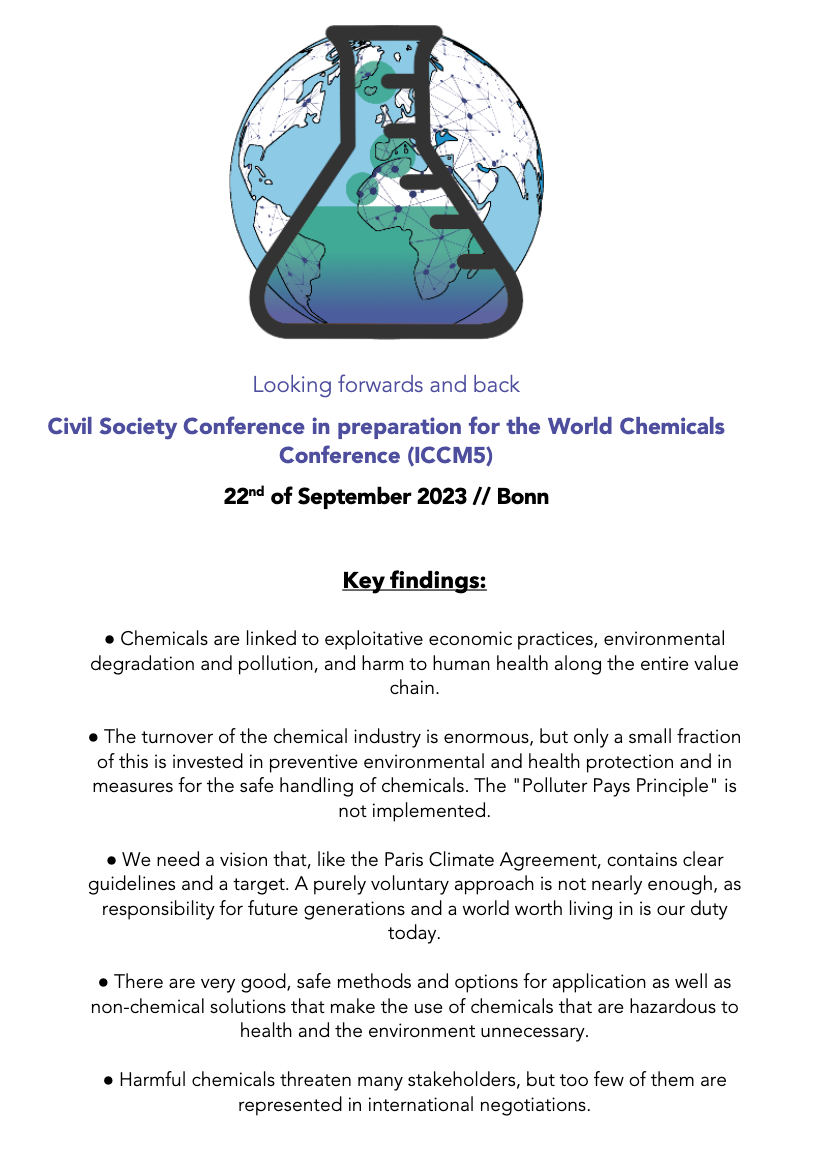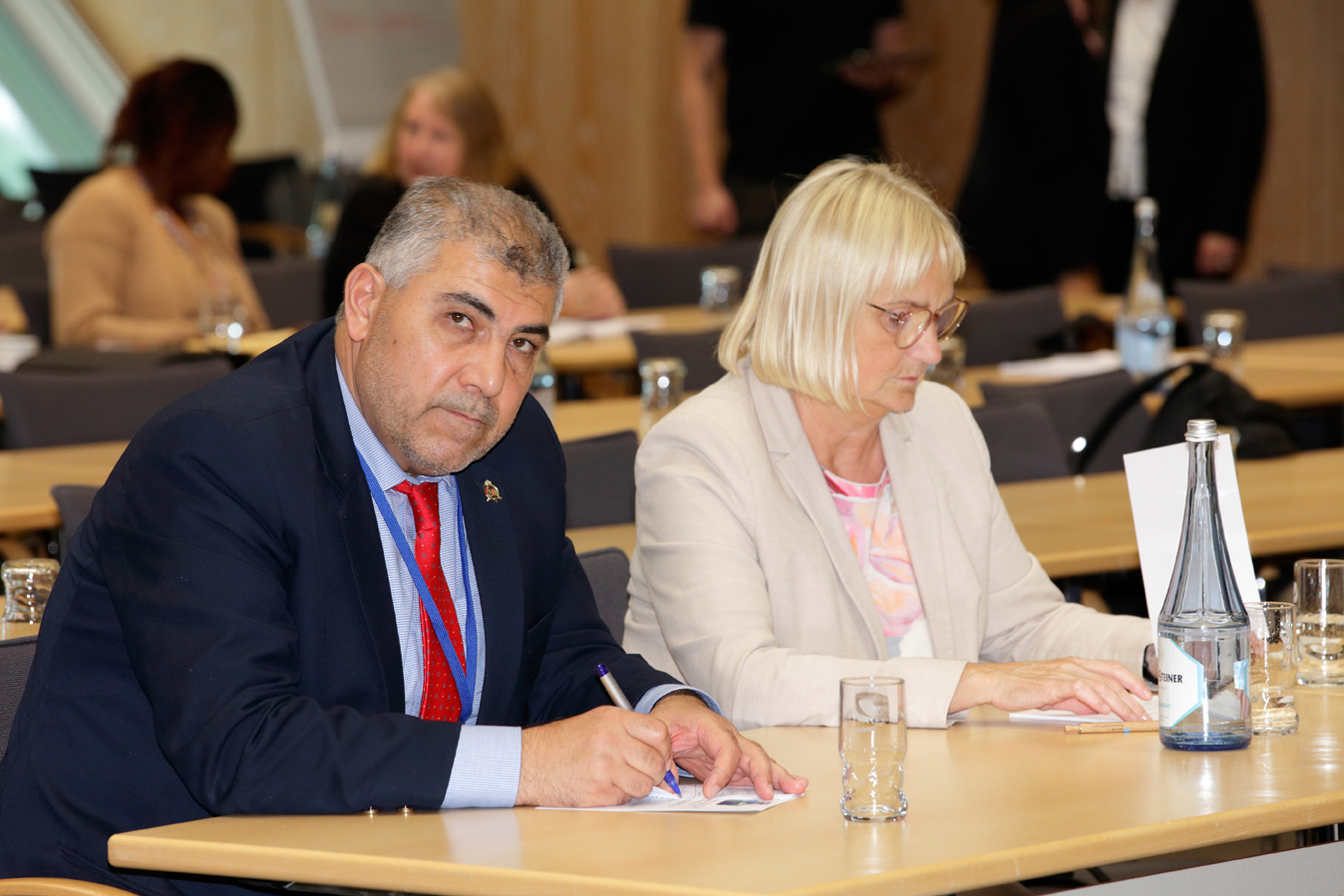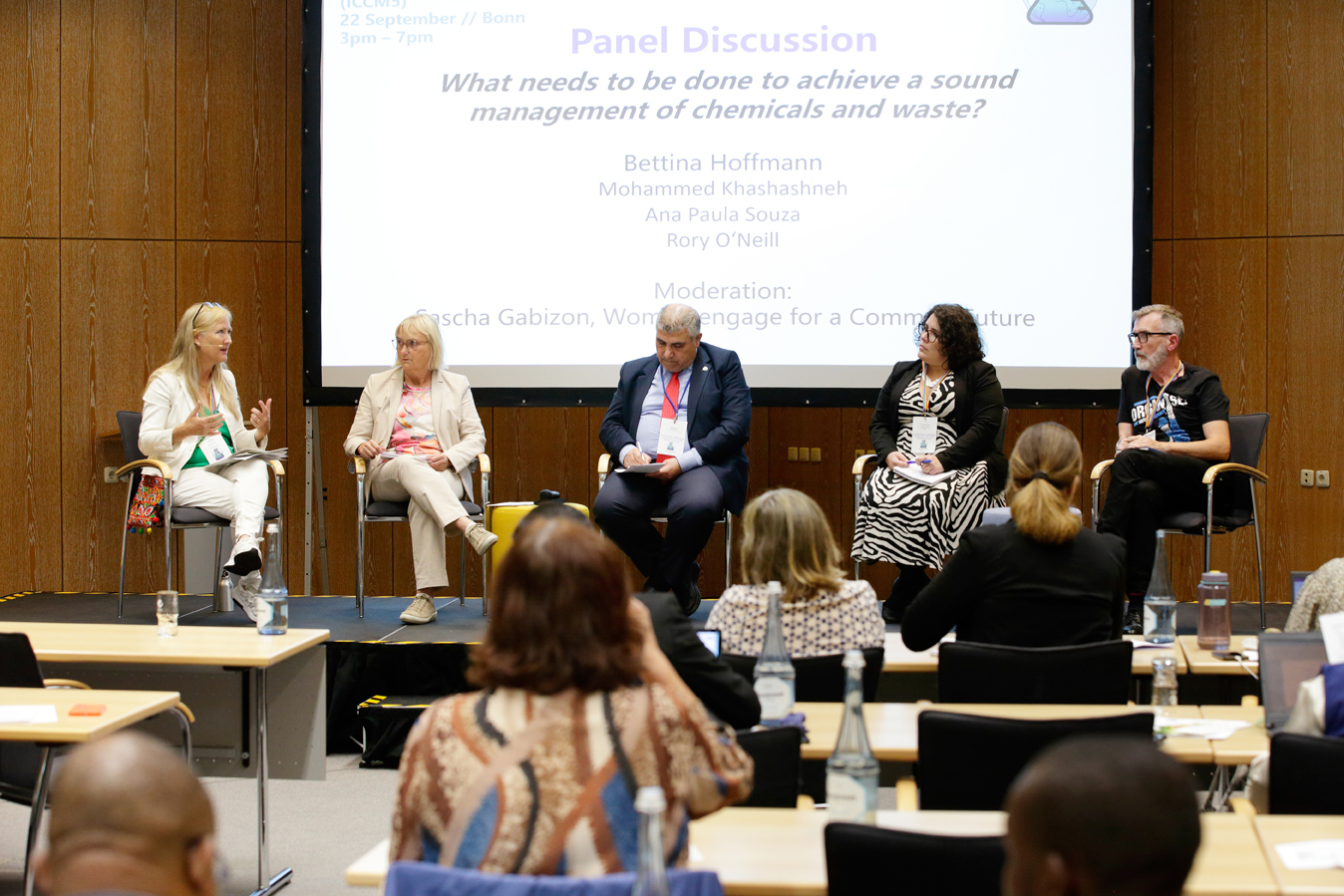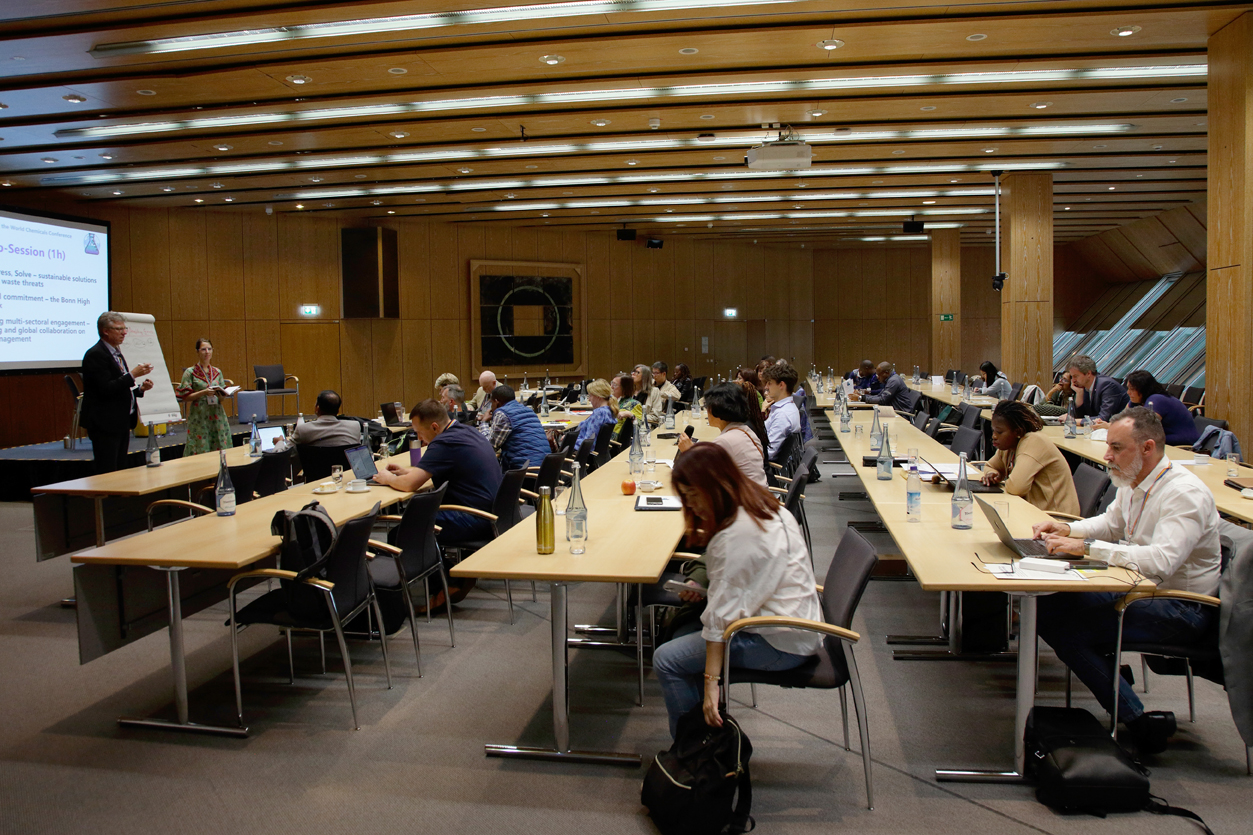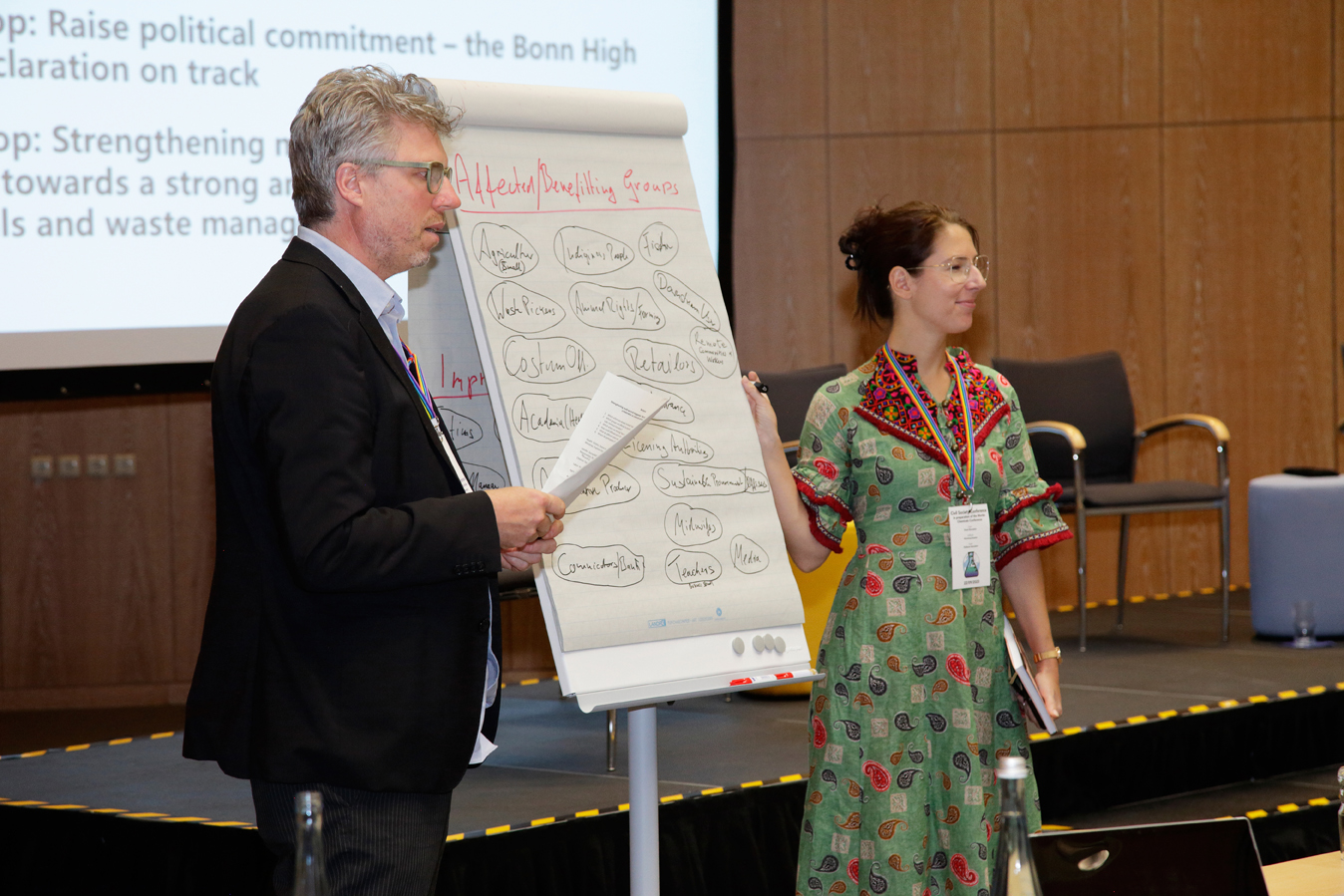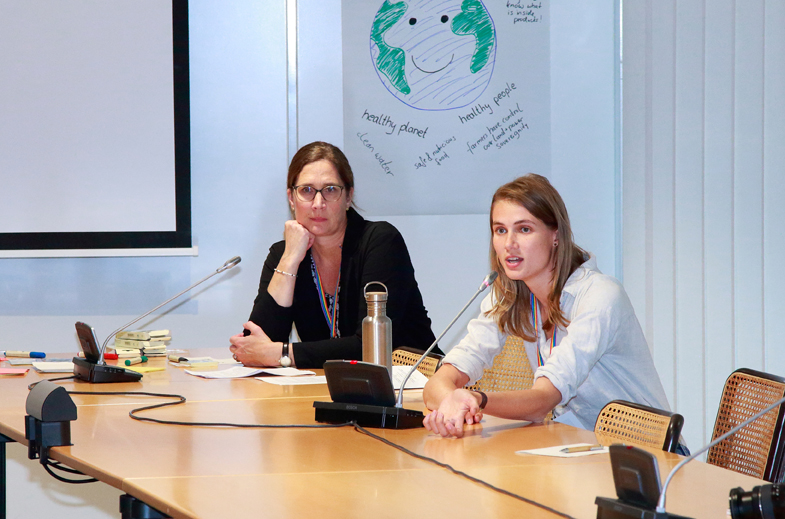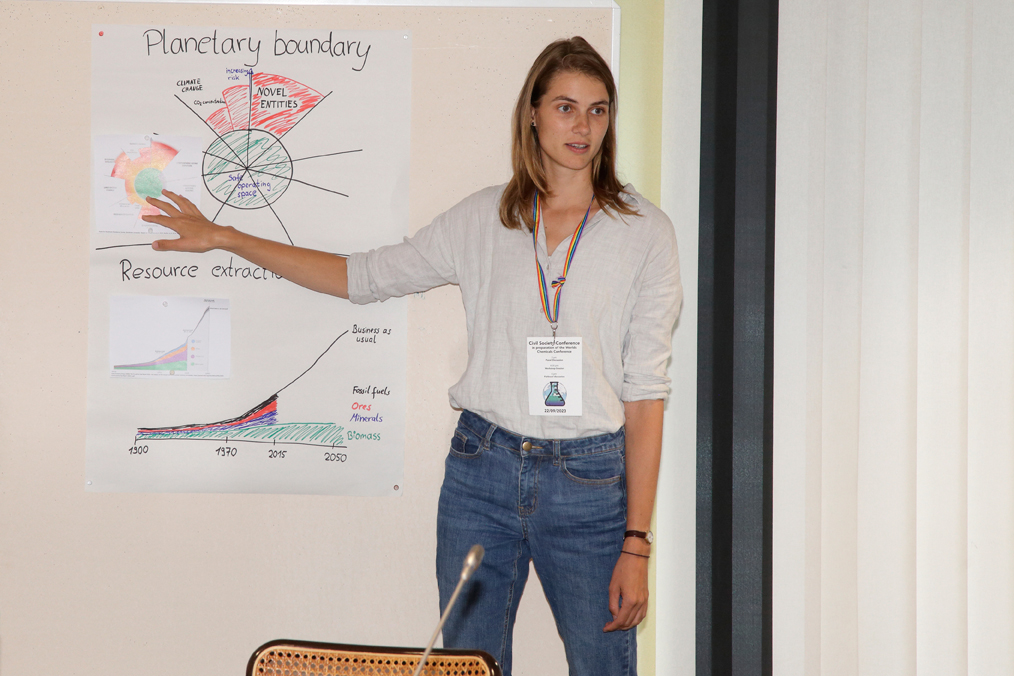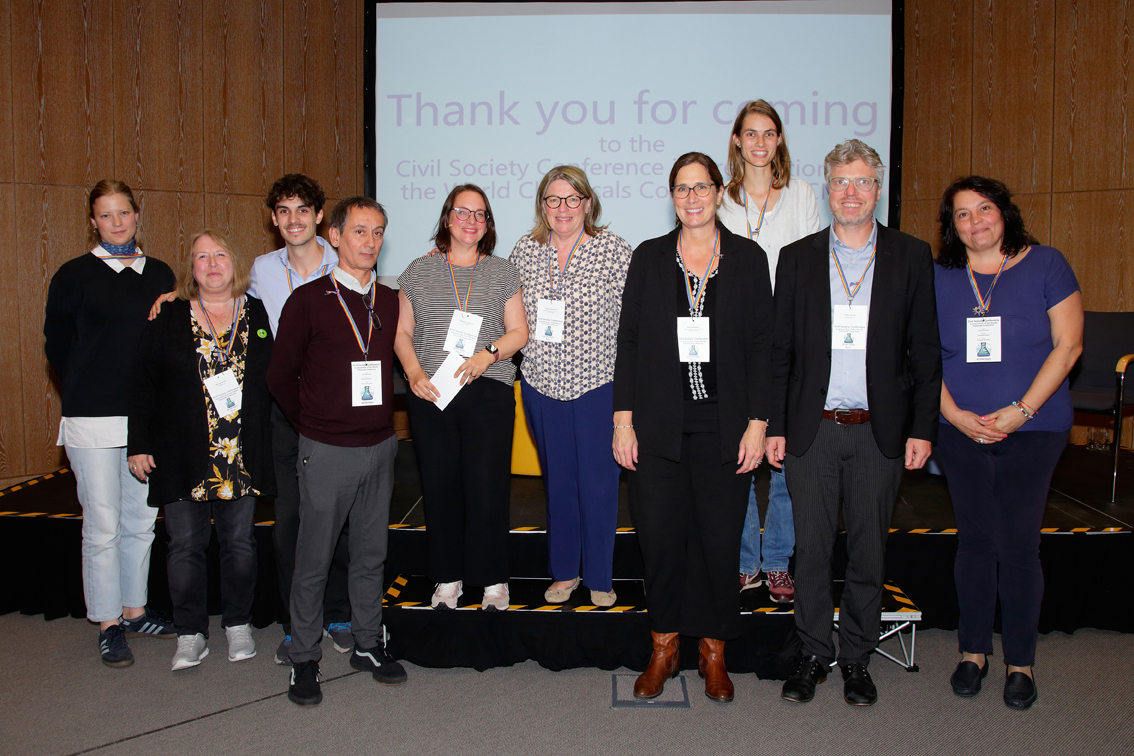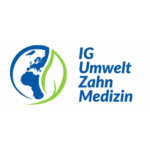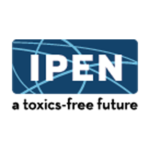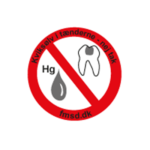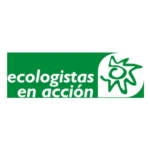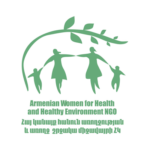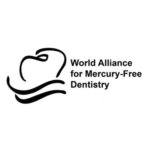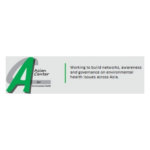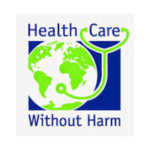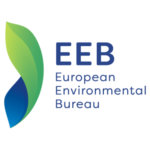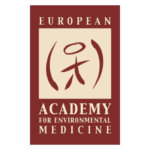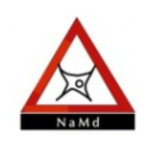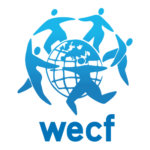The 5th session of the International Conference on Chemicals Management (ICCM5), organized by UNEP and hosted by the government of Germany who hold the presidency of this fifth session of the Conference, took place from 25 to 29 September 2023 at the World Conference Center Bonn (WCCB). Pollution is the world’s largest risk factor for disease and premature death, with pollution from chemicals contributing to millions of those deaths, illnesses and disabilities each year. Pollution from chemicals, pesticides, plastics and waste is the third plantary crisis of our time and the gap between scientific knowledge and the action needed to curb chemical pollution is growing.
The World Chemicals Conference helps to close this gap and reverse the trend but despite some successes, the hoped-for breakthrough at the World Chemicals Conference in Bonn failed to materialize. In view of the rapid and uncontrolled growth in the production and use of chemicals, the objectives of the new agreement are still too weak at key points. This means that the aim of reducing the environmental and health impacts of chemicals is unlikely to be achieved.
Here are our highlights from the 28 adopted targets:
- By 2030, stakeholders have effectively prevented all illegal trade and traffic of chemicals and waste.
- By 2030, stakeholders make available, to the extent possible, reliable information on chemicals in materials and products throughout the value chain.
- By 2035, comprehensive data and information on the properties of chemicals are generated and made available and accessible.
- By 2035, stakeholders generate data on the production of chemicals, including the use of chemicals in materials and products, in addition to data on emissions and releases of chemicals and waste to the environment, making these data available and publicly accessible.
- By 2030, Governments work towards notifying, regulating or prohibiting the export of chemicals they have prohibited nationally, in line with their international obligations.
- By 2035, stakeholders have taken effective measures to phase out highly hazardous pesticides in agriculture where the risks have not been managed and where safer and affordable alternatives are available, and to promote transition to and make available those alternatives.
- By 2030, educational, training and public awareness programmes on chemical safety, sustainability, safer alternatives and the benefits of reducing chemicals and waste risks have been developed and implemented, taking into consideration a gender-responsive approach.
- By 2030, all countries have access to poison centers equipped with essential capabilities to prevent and respond to poisonings, as well as access to training in chemical risk prevention and clinical toxicology.
- By 2030, stakeholders generate, to the extent possible, and make available comprehensive and accessible monitoring and surveillance data and information on concentrations and potential exposure sources of chemicals in humans (disaggregated by sex, age, region, other demographic factors, and other relevant health determinants as feasible), other biota and environmental media.
- By 2030, companies consistently invest in and achieve innovations towards advancing sustainable chemistry and resource efficiency throughout the life cycle of chemicals.
- By 2035, Governments implement policies that encourage production using safer alternatives and sustainable approaches throughout the life cycle, including best available techniques, green procurement and circular economy approaches.
- Adequate, predictable and sustainable financial resources from all sources needed to support achieving the sound management of chemicals and waste are identified and mobilized in alignment with the vision, strategic objectives and targets of the Framework in all sectors by and for all stakeholders, including by leveraging private finance and promoting innovative and blended‑finance schemes.
The European Network for Environmental Medicine worked on a Health Resolution together with WHO and the International Society of Doctors for the Environment (ISDE) and was especially pushing to create a global network for collecting health monitoring data to analyze trends in selected chemicals of concern in order to support the development of public policies and the improvement of national health systems.
Background
In 2006, governments and representatives of civil society, science and industry agreed to drastically reduce the negative effects of chemicals by 2020. To this end, the Strategic Approach to International Chemicals Management (SAICM) was adopted, but the goals were not achieved due to a lack of financial resources, political will and because of pressure from the industry.
The process to develop a follow-up agreement has been underway since 2015, but only now has the international community and other stakeholders been able to come together in Bonn for the World Conference on Chemicals and adopt a follow-up agreement.
The fifth session of the International Conference on Chemicals Management (ICCM5) finished in the morning of 30 September 2023 and adopted the following documents:
- Global Framework on Chemicals – For a Planet Free of Harm from Chemicals and Waste,
- Bonn Declaration – for a Planet Free of Harm from Chemicals and Waste, and
- a set of Conference resolutions focused on the implementation of the framework.
Further Information:
In the run-up to ICCM5, we coorganized an NGO conference with the German Alliance for the Right to a Toxin-Free Future (Bündnis für das Recht auf eine Giftfreie Zukunft).
You can find our report and pictures here:

